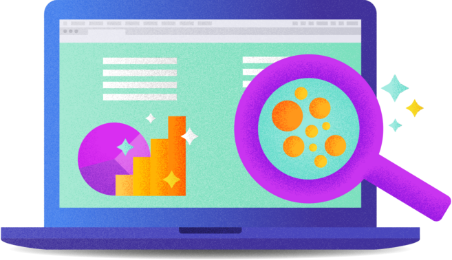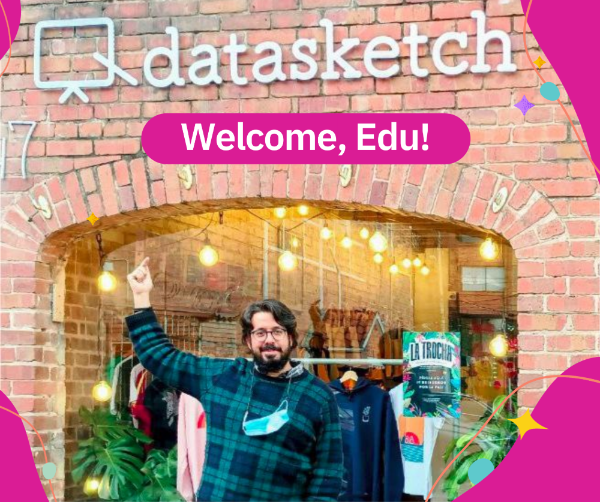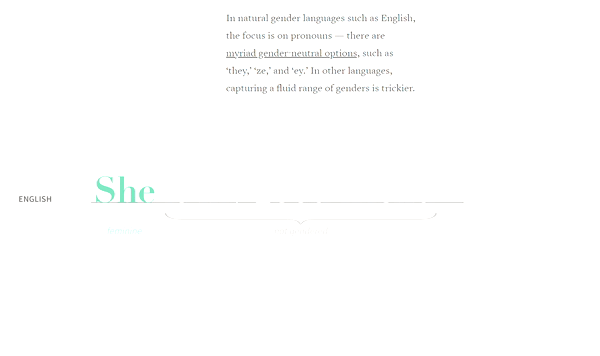Unstoppable Women and Science - Data Journalism #09
We celebrate the International Day of Women and Girls in Science. We discuss gender, language, collaborative networks, visualisations and creative ways of storytelling with data.
Available in:

We are back! We are happy to resume this path of exploring and sharing content that inspires us. 2022 comes with new challenges and excellent news.
Datasketch grows with people with outstanding social commitment and who believe in the responsible use of technology, data journalism, and openness of information. This month we have been joined by one of the great references of the data community: Edu Martín-Borregón, our new Chief Operating Officer.
Welcome! 🎉🎉

In this edition, we celebrate the International Day of Women and Girls in Science. We talk about gender gaps, uses of language, new collaborative networks, visualizations, and creative ways of storytelling with data.
If you like this newsletter, you can subscribe here. If you like data journalism, open government and culture take a look at our blog and newsletters.
#WomenInScience
Six years ago, the UN declared February 11 as the International Day of Women and Girls in Science to recognize women’s essential role in the scientific community and technology. It seeks to unify efforts and voices that promote access, complete and equal participation, gender equality, and women and girls' empowerment.
On this special day, we wanted to compile a few facts that show that we still have a long way to go:
- Less than 30% of scientific researchers worldwide are women (Unesco Institute for Statistics, 2019).
- The percentage of women out of the total number of scientists and engineers in the European Union is 22 (Eurostat, 2020).
- “(…) in Cloud Computing, women make up 14% of the workforce; in Engineering, 20%; and in Data and AI, 32%.” (Global Gender Gap Report, 2021)
- In the green economy, which seeks STEM (Science, Technology, Engineering and Mathematics) solutions to climate change, women hold only 29% of positions (El País, 2021). That is evidence of a gender gap, which, if the trajectory continues, could take 150 years to close (BCG, 2021).
WiDS Worldwide Conference
In 2018, Microsoft surveyed more than 11 thousand women between 11 and 30 years old in Europe. They found that the number of girls interested in STEM almost doubles when they have a role model. Otherwise, girls may desist from studying the STEM field due to social pressure, biases and stereotypes.
These discoveries show why it is necessary to increase women’s visibility in science and strengthen pedagogy. One initiative that has become a benchmark in recent years is Women in Data Science (WiDS). It aims to inspire and educate data scientists worldwide, regardless of gender, and to support women in the field.
Wids has become a global movement that includes conferences, datathons, podcasts, educational programs, and workshops. The new edition will be held on March 7, 2022. It will have 31 speakers from institutions and organizations such as the University of Washington, Harvard University, Google, IBM, Tableau or YouTube.
You can register at this link. There will be free tickets for the first 5000 students!
DataViz
He, She, They
The use of a pronoun classifies and binds individuals to a sociocultural order, to which one should be able to decide whether one wants to belong or not.
Minami Funakoshi and Sam Granados made this interactive report, in which they explore and explain how gender affects the construction of ideas, relationships, and ways of understanding our world. They work on the premise that modifying language to reflect a spectrum of gender identities is a fundamental change, which raises a debate to be put on the table.

Source: Gender and Language | Reuters Graphics
Right to equality
iTech Mission, a social impact technology company, developed an interactive, cloud-based, open-source dashboard to analyze the Gender Gap Indexes globally. It has four interactive graphs with information from 156 countries showing their Index score, based on economic, education, health, political empowerment, childbearing, and early marriage data.
Resources
500 Women Scientists is an organization that “works to build communities and foster real change that comes from small groups, not large crowds.” Since 2016 they have consolidated a support network of women scientists confronting racism, misogyny, xenophobia and anti-science rhetoric.
The doors are open to becoming part of its community, which spans 92 countries and has more than 12 thousand members. The network allows you to self-identify your identity and find safe spaces. It also has databases, material related mainly to the STEM sector, and a list to contact and meet other women scientists.
DataTip
If you need to improve the usability of your visualizations, we recommend you this guide from the European Environment Agency. It explains how to increase the descriptive and narrative potential from a balance of design, colors, texts, amount of data, variables or hierarchy of information.
Want to read more?
We leave you with a varied selection of other news that we like or shock us.
Gender
- 🙋♀️ When Women Make Headlines | The Pudding
- 🦇 Should Big Oil Pick Up The Climate Change Bill? | Short Wave, an NPR podcast
Green
- ☕What climate change means for the future of coffee and other popular foods | National Geographic
- 🎿 Rising temperatures threaten future of Winter Olympics, say experts | The Guardian
Corruption
- 💸Corruption is getting worse in many poor countries | The Economist
Maps
- 🚨 Mapping Ukraine and Russia on the edge of war | Reuters Graphics
- 🌊 Lights (at sea) | Geo
- 🌏 Monitor Tracking Civic Space | Civicus
See you next time!
Nicolás Barahona, Laura T. Ortiz and JP Marín Díaz wrote this newsletter.
If you have been forwarded this newsletter and like it, you can subscribe here.
Twitter | Facebook | Instagram | LinkedIn | Blog | Newsletters




